Botanical illustrations capture the beauty of nature with intricate detail and timeless elegance. Whether you’re an aspiring artist or looking to refine your skills, learning how to draw flowers, leaves, and plants can be both relaxing and rewarding. This beginner-friendly guide will walk you through the essentials of botanical illustration, from choosing materials to mastering shading techniques.
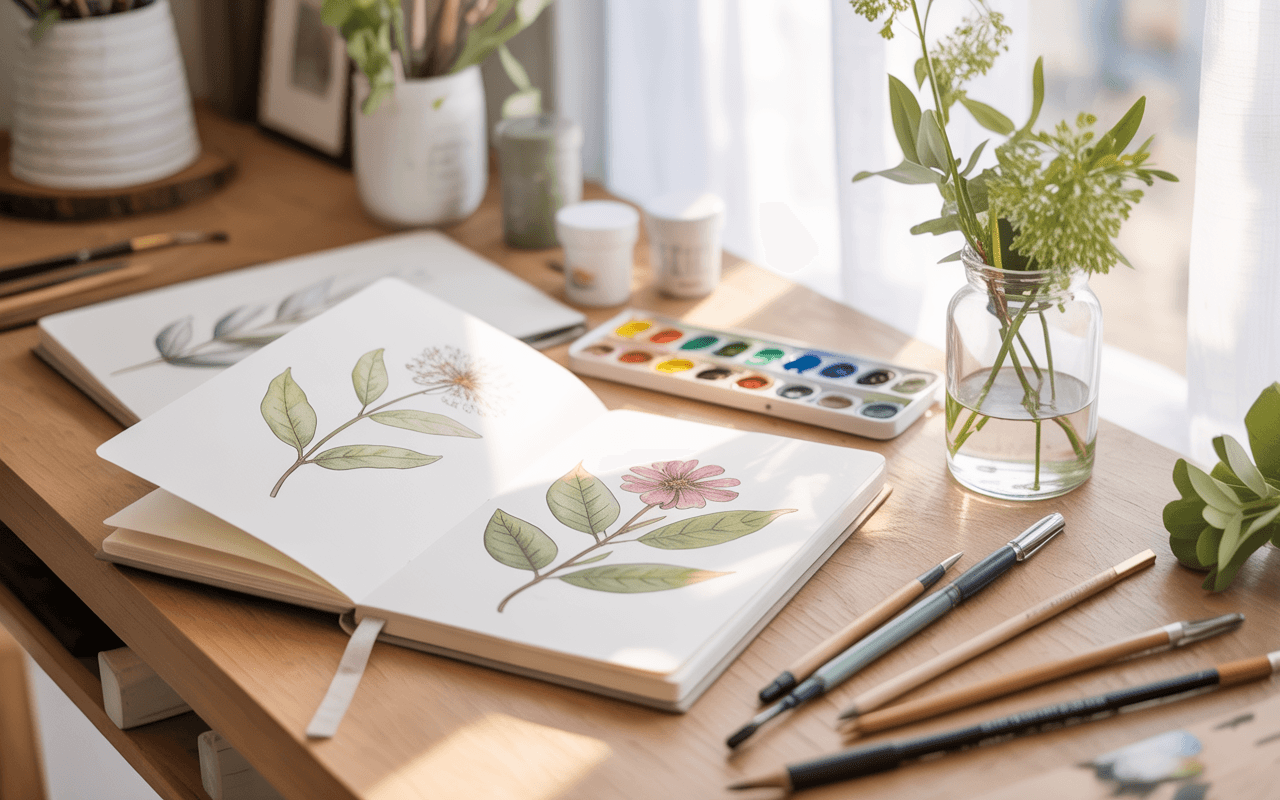
(This blog contains affiliate links, meaning I make a small commission at no extra cost to you.)
Why Botanical Illustration?
- Enhances Observation Skills: Develops an eye for detail and structure.
- Improves Drawing Techniques: Perfects line work, shading, and composition.
- Creates Stunning Art: Ideal for prints, stationery, and home decor.
Pro Tip: Botanical art is perfect for watercolor, ink, and colored pencils—experiment to find your favorite medium!
Essential Supplies for Botanical Drawing
✔️ Sketchbook with Smooth Paper – Prevents ink bleeding and allows fine details. Top Pick
✔️ Fine-Tip Pens & Ink Liners – Essential for delicate line work. Shop Now
✔️ Graphite & Colored Pencils – Great for shading and adding color. Try These
✔️ Watercolor Set & Brushes – Adds softness and depth to illustrations. Best Watercolors
✔️ Reference Books or Photos – Helps with accurate plant details. Get Inspired
Step-by-Step Guide to Drawing Botanical Illustrations
1. Choose Your Subject 🌱
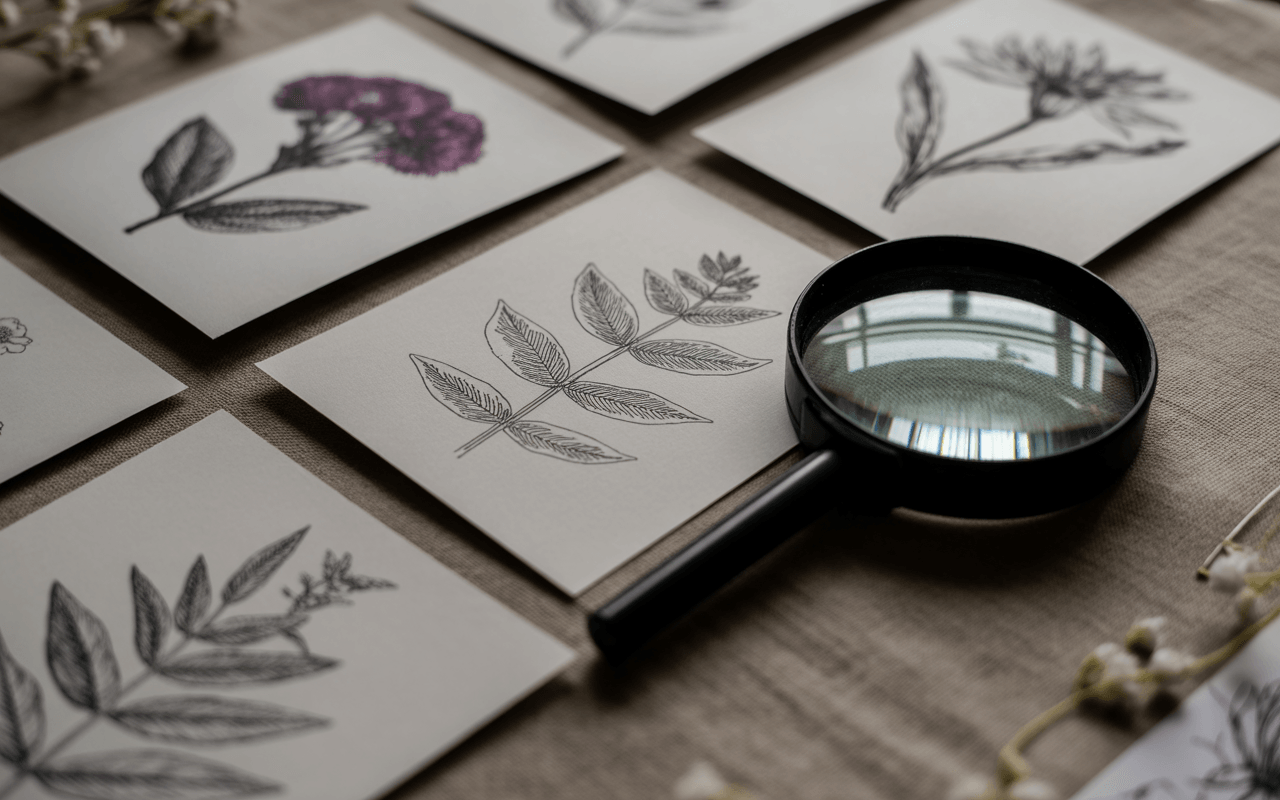
- Pick a real plant, flower, or leaf as your reference.
- Study the shape, texture, and tiny details.
- Use multiple angles for accuracy.
2. Sketch the Basic Shape
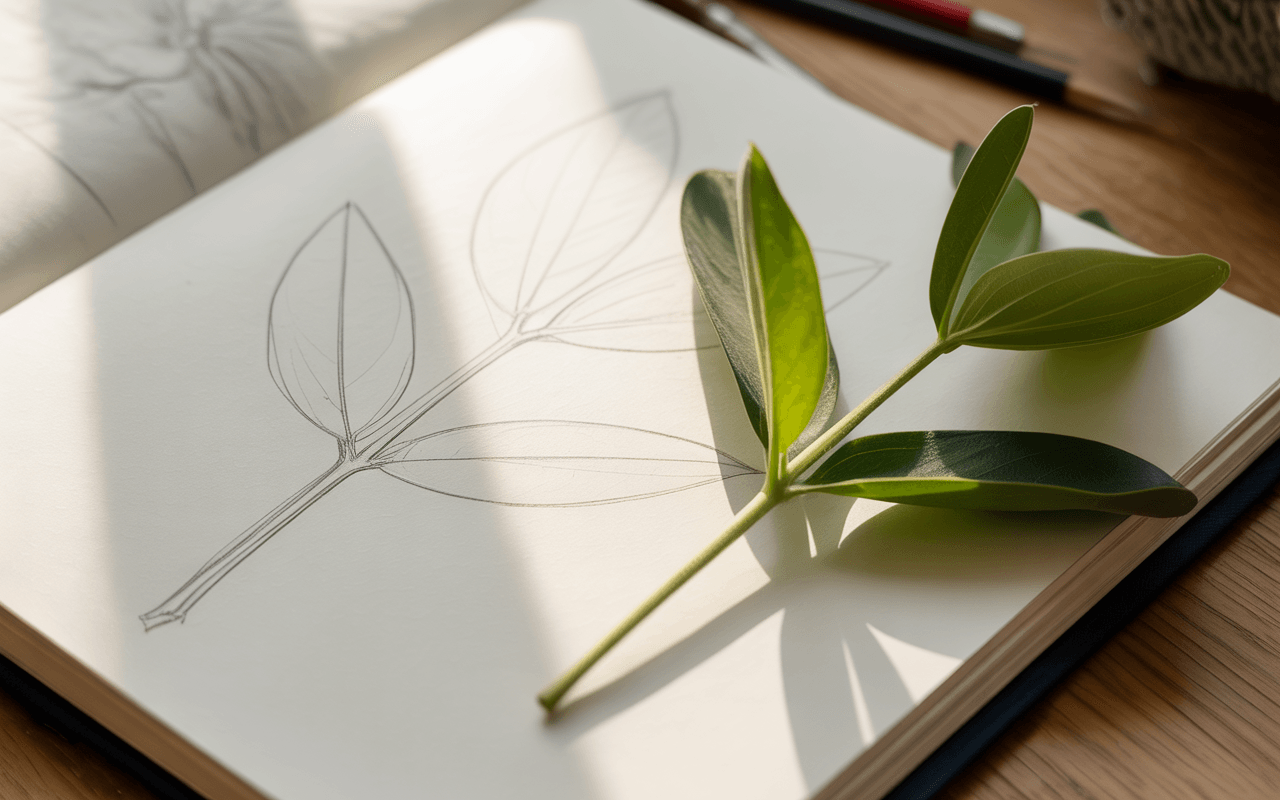
- Lightly outline the general shape using a pencil.
- Break down complex flowers into simple shapes (circles, ovals, triangles).
- Keep strokes soft and adjustable.
3. Refine the Details
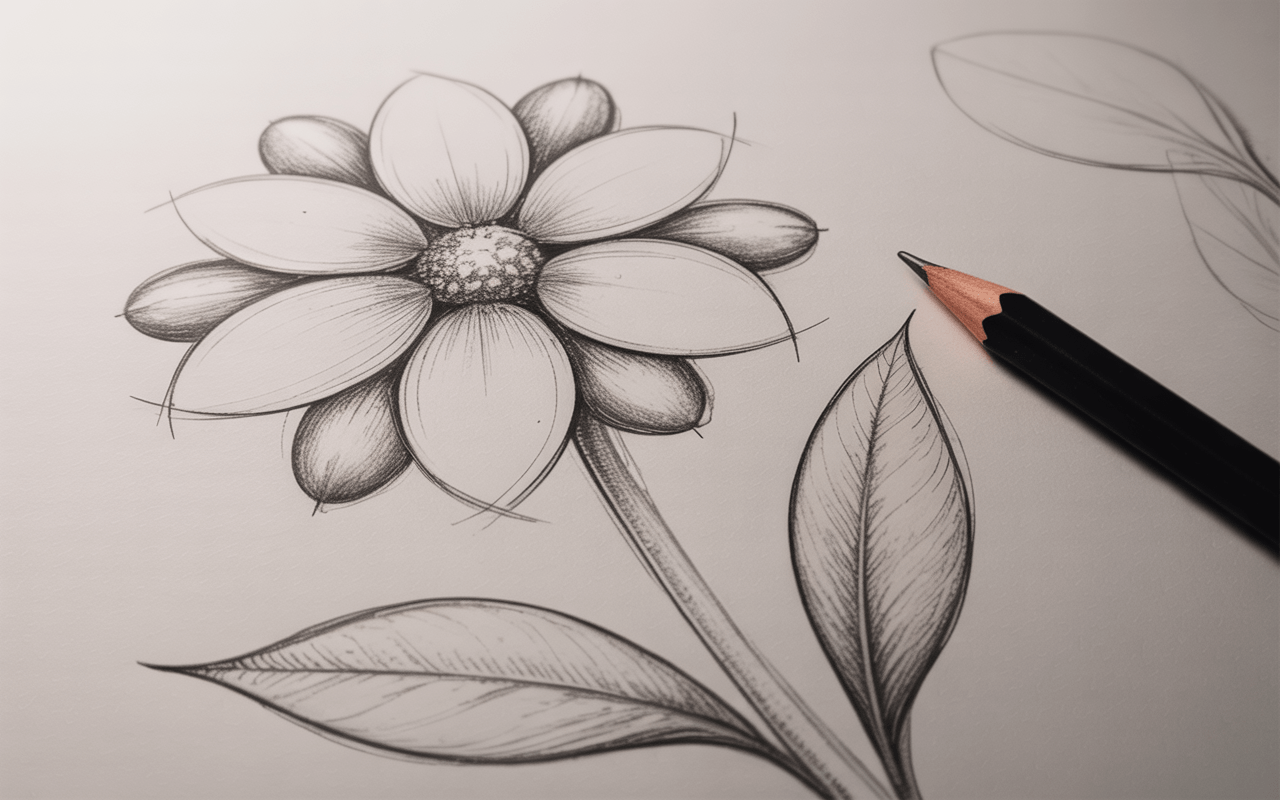
- Add petal veins, leaf serrations, and subtle curves.
- Pay attention to symmetry and proportion.
- Use a kneaded eraser to remove unnecessary lines.
4. Ink Your Illustration
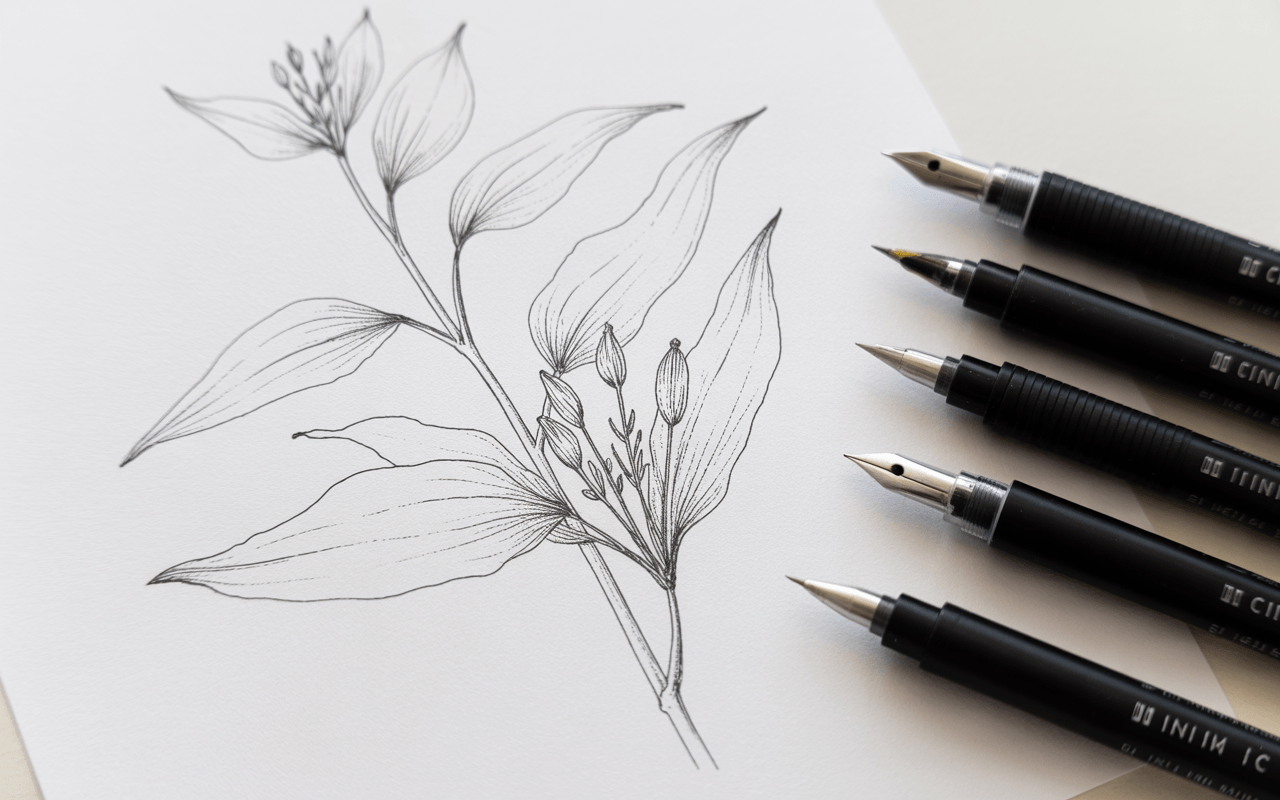
- Trace over your final sketch with fine-tip ink pens.
- Vary line thickness for depth and dimension.
- Allow ink to dry before erasing pencil marks.
🛍️ Best Inking Pens: Fine-Line Set | Waterproof Ink Pens
5. Add Shading & Texture
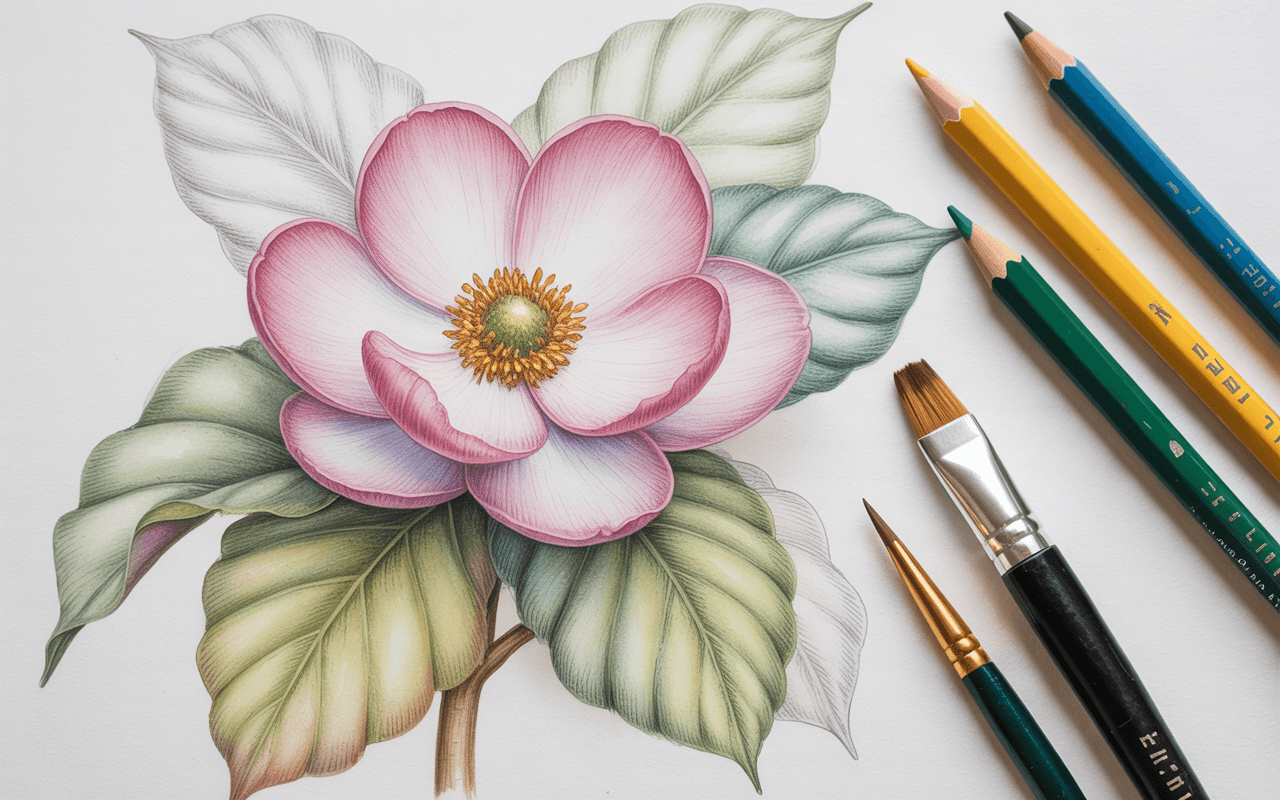
- Use hatching, stippling, and cross-hatching for depth.
- Apply soft gradients for a realistic effect.
- Blend colored pencils or watercolors for a vibrant touch.
Recommended Tools: Shading Pencil Set | Smooth Blending Markers
6. Final Touches & Background
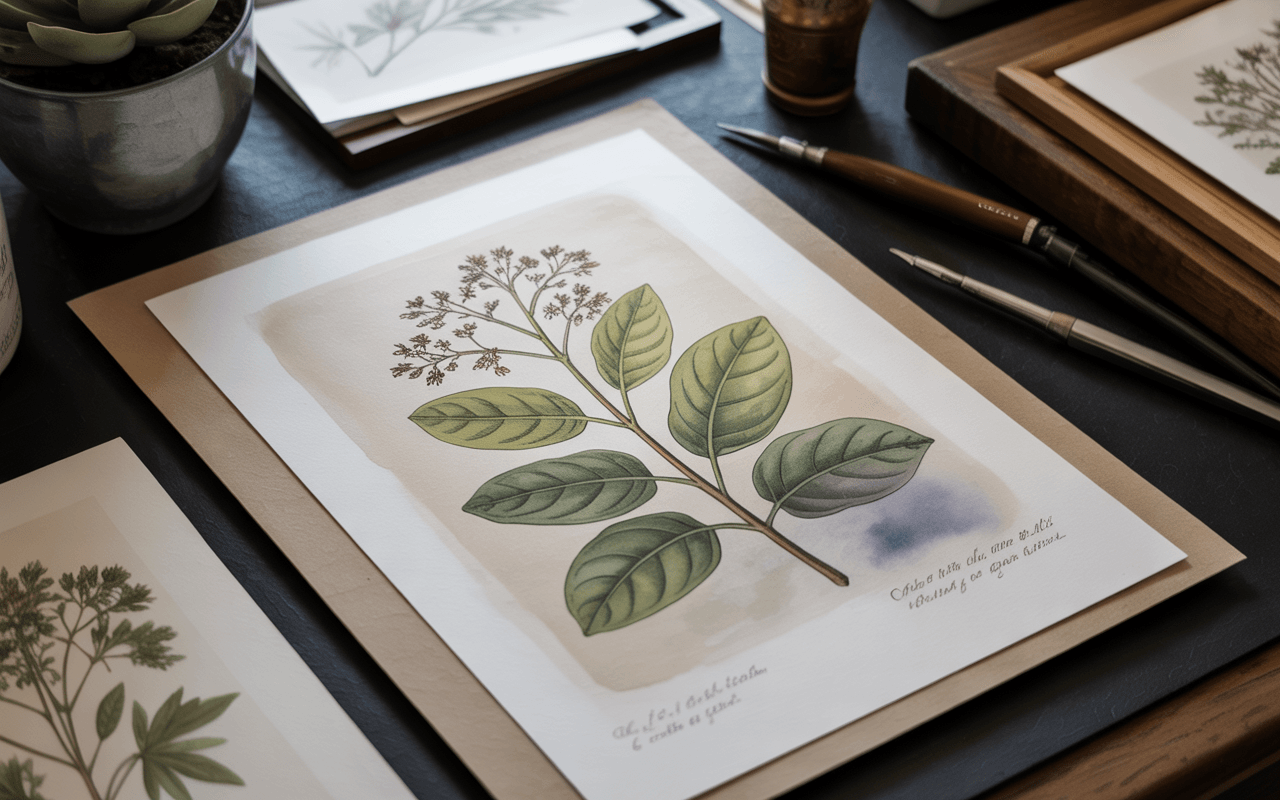
- Add botanical labels, annotations, or vintage-style borders.
- Experiment with soft color washes for an artistic effect.
- Scan and digitize your work for prints or stationery.
Creative Botanical Illustration Ideas
Floral Wreaths – Perfect for invitations and decor.
Herb & Leaf Studies – Great for herbal guides and recipe books.
Wildflower Bouquets – Capture the beauty of spring and summer blooms.
Monochrome Ink Illustrations – Elegant and timeless for classic sketches.
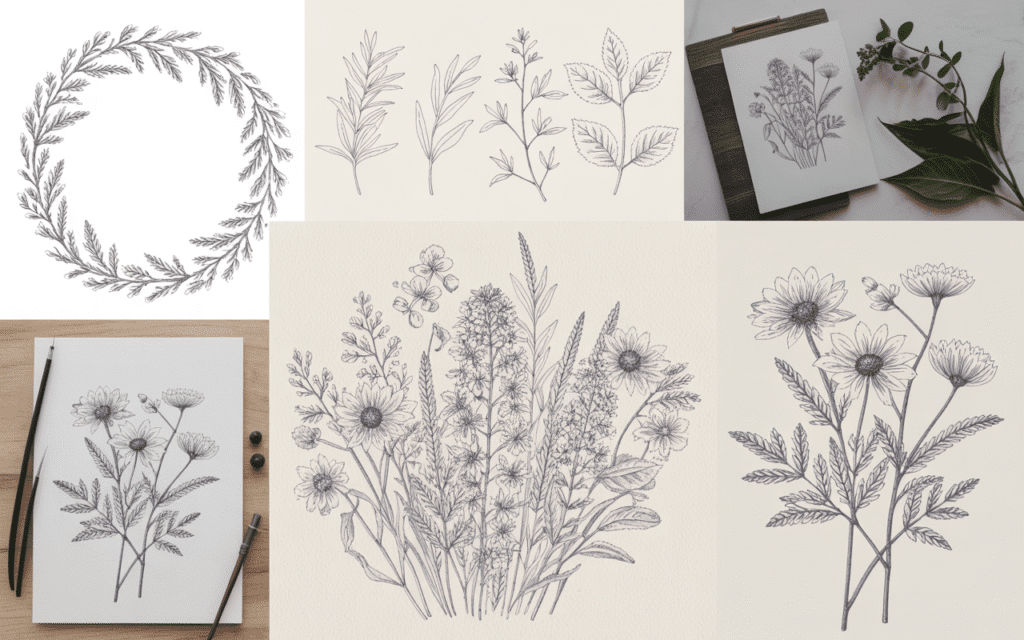
Want More Inspiration? Save This Post & Follow for Updates!
Start Your Botanical Drawing Journey Today!
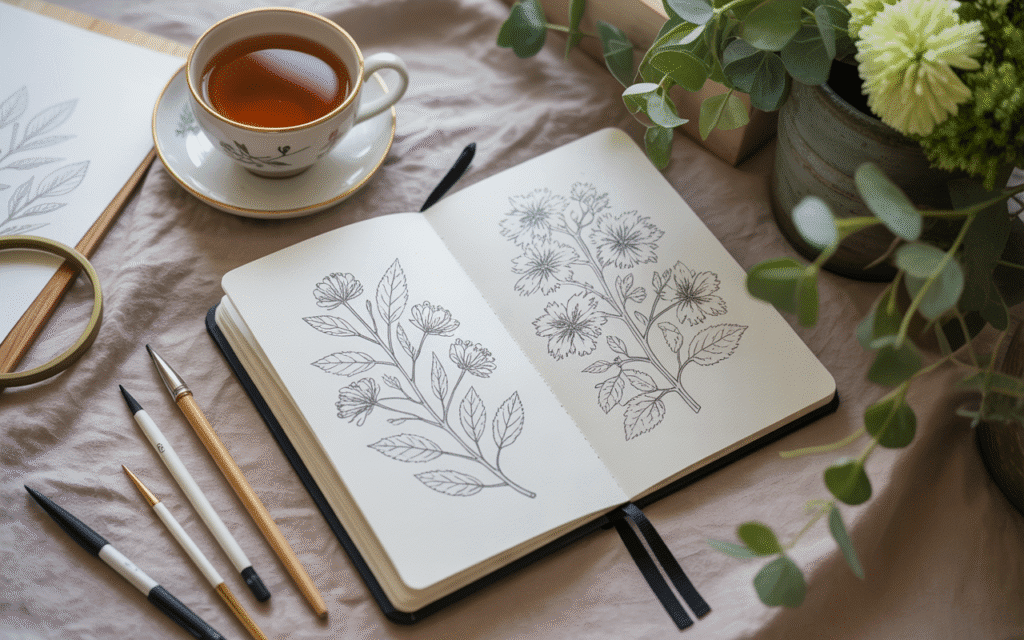
Botanical illustration is a calming and rewarding art form that helps you appreciate nature’s beauty while improving your drawing skills. Grab your supplies, find a plant that inspires you, and start sketching!
[…] How to Draw Botanical Illustrations […]